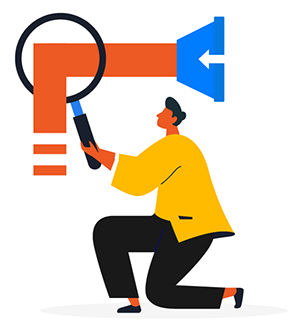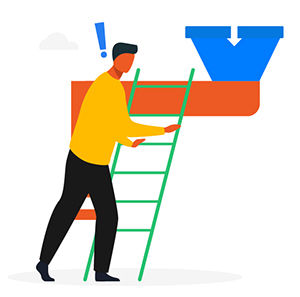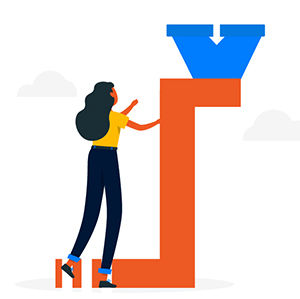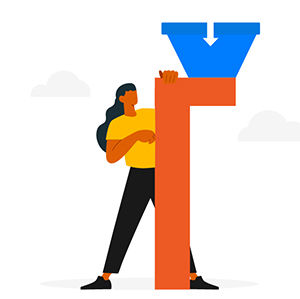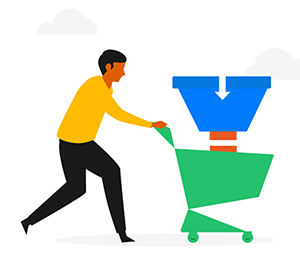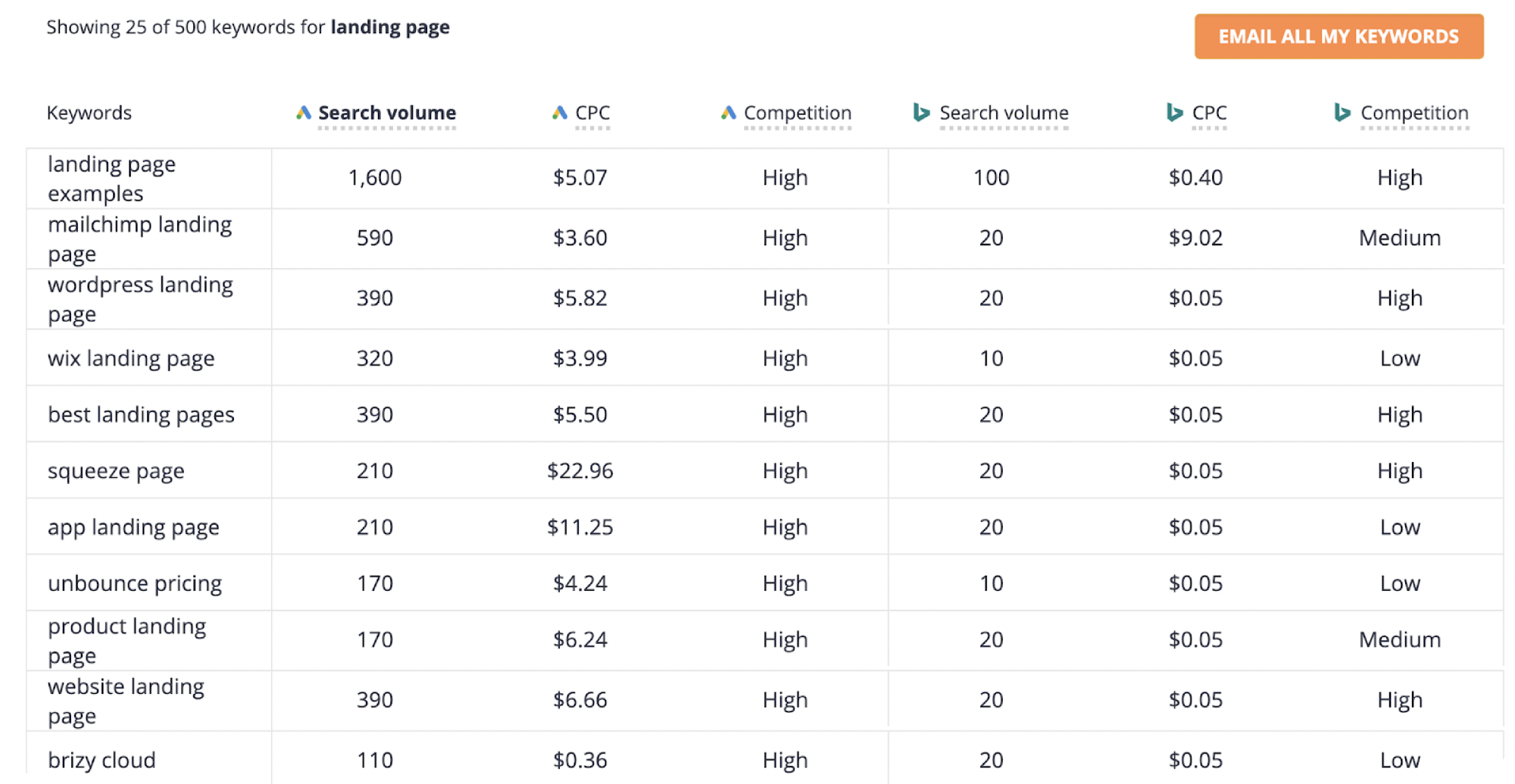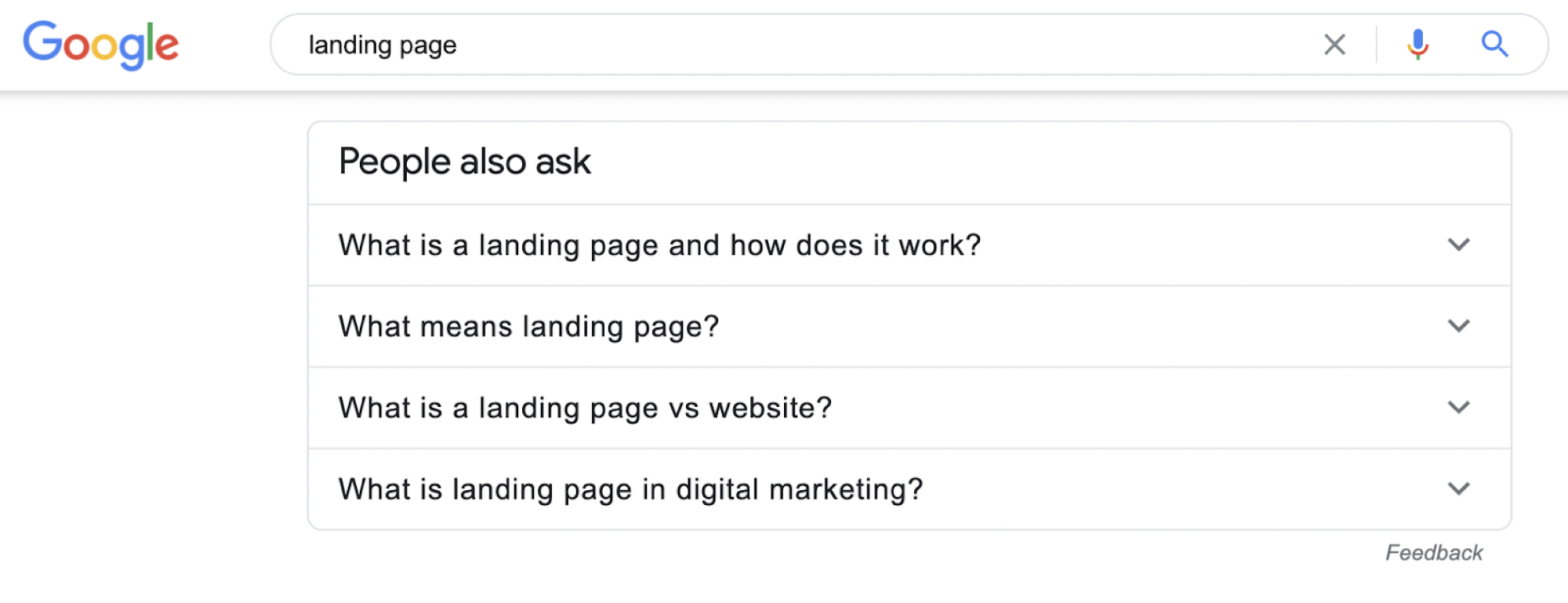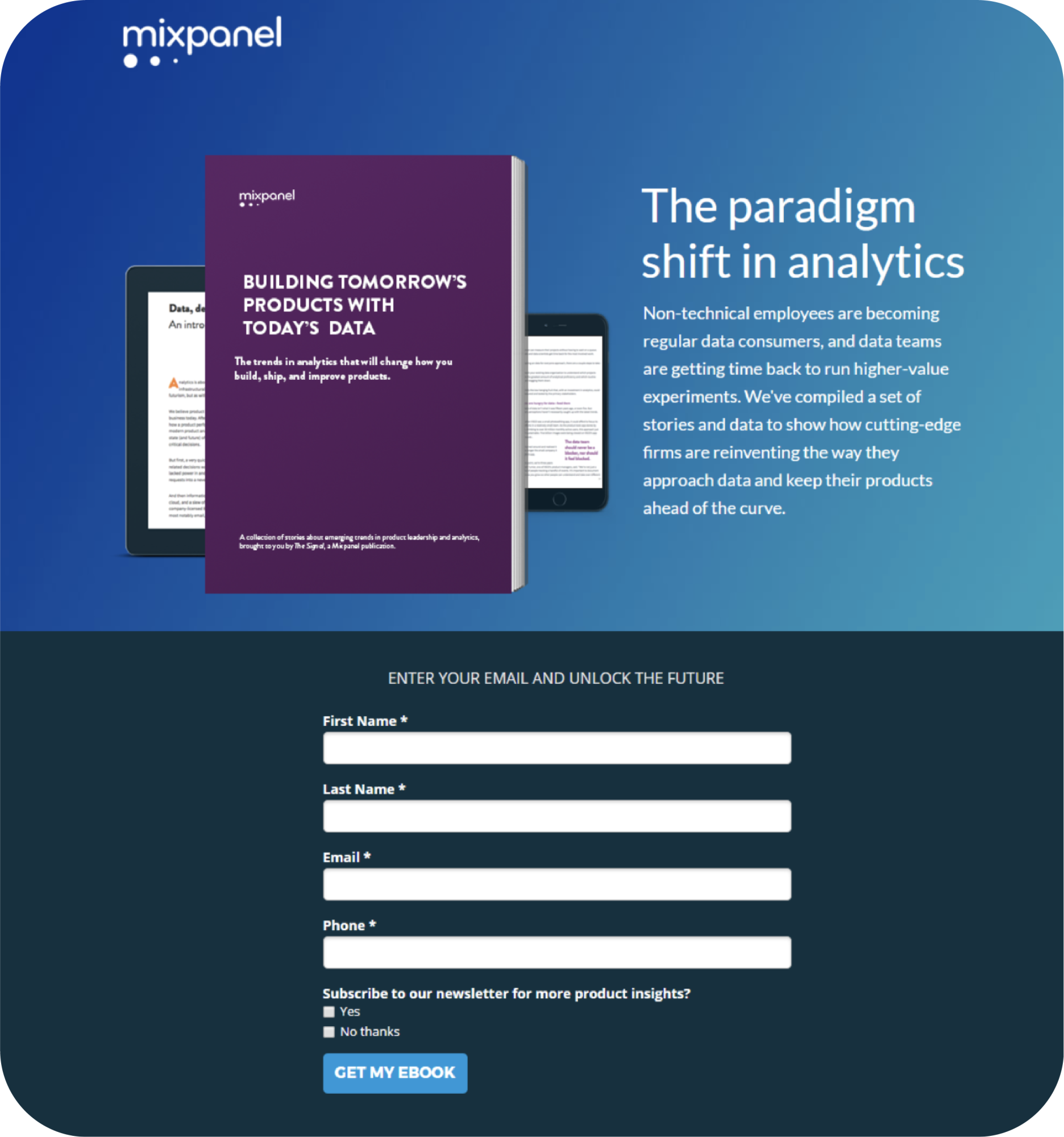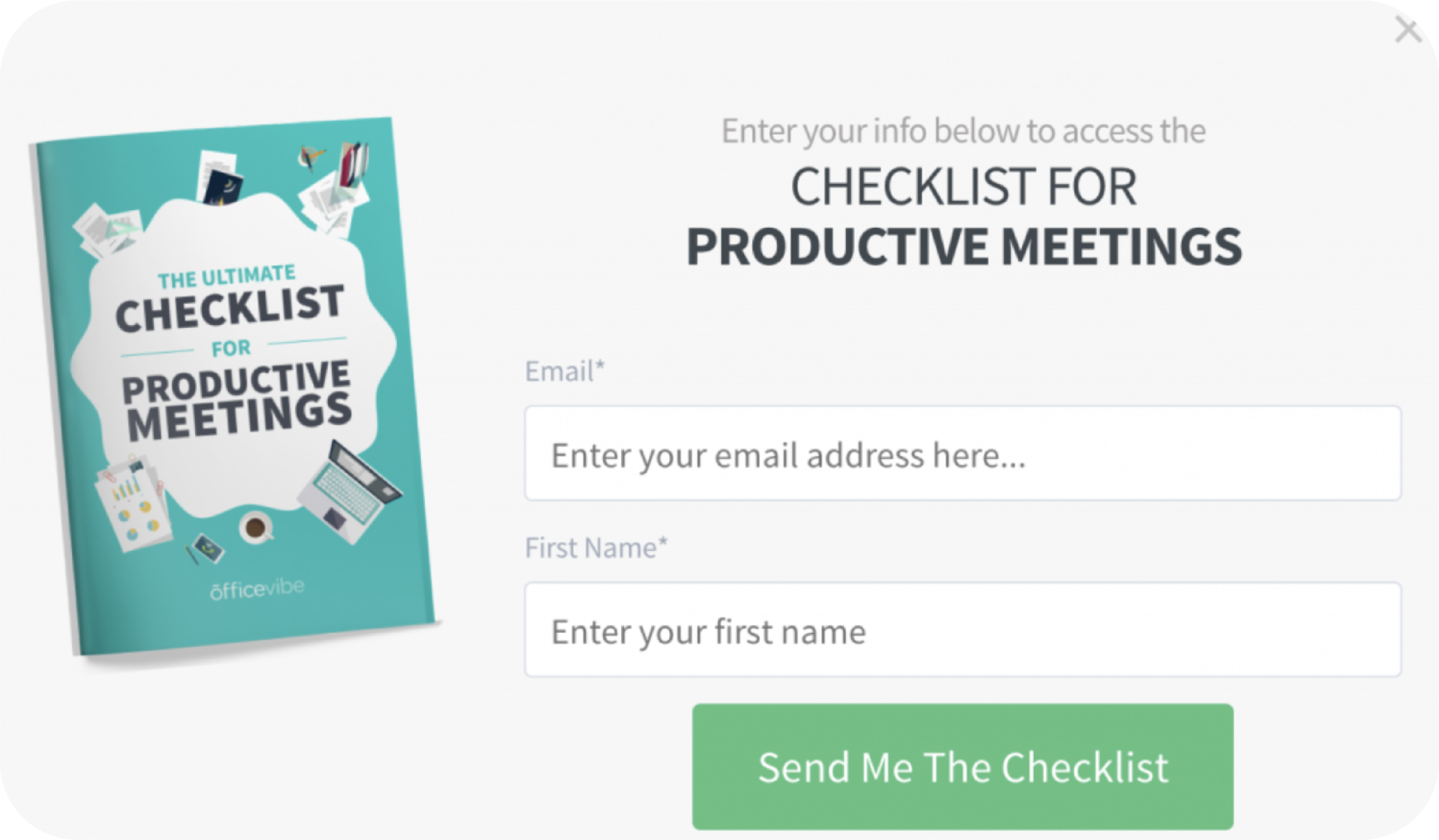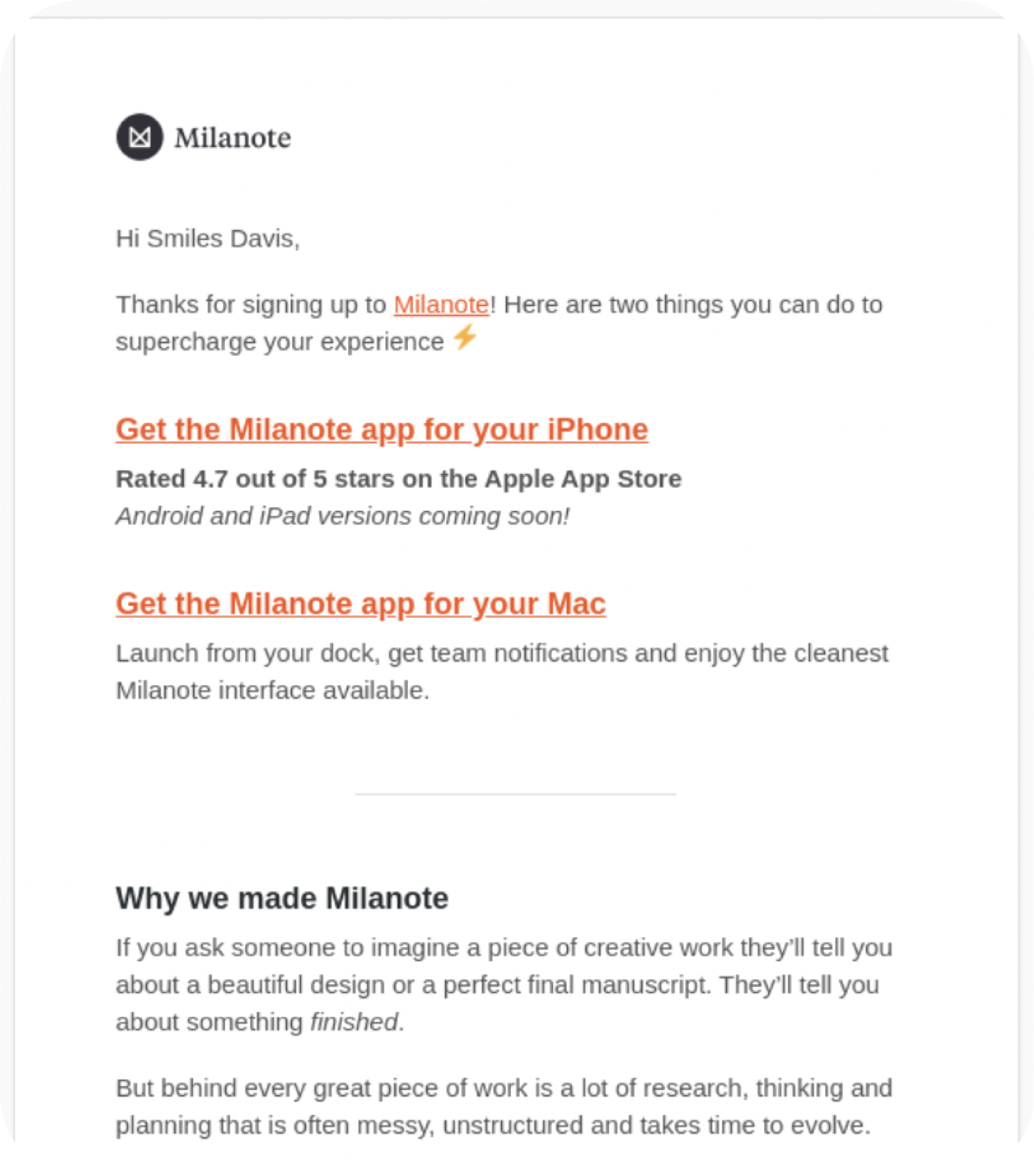How to create your unique sales conversion funnel?
Step 1: Find out what your customers need
Before you start piecing together your conversion funnel, it’s important to identify what information your audience needs to know. This will be the kind of content they’re searching for and what they need to build awareness of your brand and your product offerings.
Ask yourself:
-
What is the biggest problem my customers need solving?
-
What information do they need to help them solve that problem?
-
What will they be searching for to find an answer?
-
What are my competitors doing to answer that question?
-
Are there any gaps that I can fill?
Answering questions like these will help you identify what kind of TOFU content your conversion funnel needs and where your content will fit in the pre-existing market.
Here’s a quick guide to finding out what your customers need.
Keyword Research
Keyword research will help you pinpoint the exact phrases your customers are using to search for brands and products like yours. You can use these phrases to create relevant content and help push your website to the top of search engines.
This also forms a good starting point for your content strategy, which will create much of the top layer of your conversion funnel.
Use a keyword research tool to find keyword ideas and identify the keywords your competitors are already ranking for.
This is a screenshot from Wordstream’s free keyword research tool, but you can also use more in-depth software like Ubersuggest, Ahrefs, or SEMRush.
Find Commonly Asked Questions
Once you have an idea of the main keywords that your audience are using, you can drill down into the common questions and queries they have.
You can use a variety of methods to do this, including searching for topics on forums like Quora and Reddit, or checking the People Also Asked section in Google’s search results of relevant keywords.
Create a TOFU Content Plan
By this point, you should have a lot of potential content topics. The next step is bringing it all together into a content plan and creating your TOFU strategy. The goal here is to map out and create a consistent strategy that continues to answer common questions your audience have so they can find you via search engines and other methods.
Publishing regular fresh content will keep your site at the top of Google search results and will provide leads with multiple different ways of finding you. Content types you might incorporate here include:
-
Blog posts
-
Q&As
-
Videos
-
How-to guides
-
Podcasts
-
Social media posts
Step 2: Convert leads with an irresistible free offer
The last thing you want is for leads to dine and dash on your TOFU content. If they leave your site, there’s a big chance they won’t come back and you’ve lost the potential to nurture a new customer. Avoid this by offering them an irresistible freebie in exchange for their email address.
This is often called a lead magnet, and can be anything from a downloadable ebook to a simple one-page checklist. It should build on the information your leads need to move further down the funnel and be a value-add to your TOFU content.
There are several building blocks that make sure this part of your conversion funnel is tight and performing as it should be:
Landing Page
Landing pages are an integral part of a conversion funnel. They act as a gateway for channeling website visitors into qualified leads by collecting email addresses. Good landing pages explain what prospects will get when they hand over their details and provide the opportunity to claim a freebie in return.
The best landing pages don’t ask for too much information or make it too complicated for leads to get the freebie. Instead, they promote the benefits of the offer and are a value-add to existing TOFU content that visitors might have originally landed on.
This landing page by Mixpanel has a visual of what leads will get when they provide their details as well as a brief summary of what the freebie will show them. That’s followed by a short form where visitors can enter their important details and a prominent call-to-action that uses first-person language to create a connection.
Lead Magnet
Your lead magnet is the freebie you offer in exchange for an email address. Use your research from step one to determine what kind of content aligns with your target audience’s needs. Remember, at this point they are aware they have a problem that needs solving and are weighing up their options. As a result, your lead magnet should help them continue their journey to the sale by providing additional information to the TOFU content that attracted them in the first place.
Here are some different types of lead magnets to choose from:
-
Ebooks
-
Checklists
-
Case studies
-
Video series
-
Cheatsheets
-
Templates
-
Swipe files
-
Scripts
-
Toolkits
-
Workbooks
-
Tutorials
-
Reports
-
Whitepapers
This lead magnet by OfficeVibe offers a checklist that helps visitors have more productive meetings.
Whatever type of lead magnet you decide to use, make sure it solves a real problem that customers have, provides a quick win, is super specific, and is easy to digest. While ebooks are a popular form of lead magnet, they can overwhelm leads if they’re too long or contain too much generalized information.
Email Sequence
The final part of this stage is putting together an email sequence that nurtures leads. These are the people who have read your TOFU content and given you their email address in exchange for your lead magnet.
Now, it’s time to stay in touch with them and continue to provide value until they’re ready to buy.
The most successful email sequences are:
-
Personalized to customer needs (most email marketing software allows you to segment subscribers based on their interests and behavior)
-
Provide a healthy mix of educational content and product pitches
-
Lead towards the end goal: converting subscribers into paying customers
Milanote welcomes new subscribers and encourages them to take action right away. Showing up in subscriber inboxes helps you stay front of mind and remind potential customers why your product is the best fit for their needs.
Step 3: Delight Customers With Ongoing Content
The conversion funnel doesn’t end when a customer makes a purchase. In fact, existing customers bring in more revenue and are easier to sell to, so make the most of this by providing them with the content they need after they buy.
Content at this point will vary depending on the type of product you’re selling, the customers you’re targeting, and what they use your product for. For example, if you have a SaaS calendar product, providing tutorials and demos for different use cases can work really well, while a B2B catering company might have better results sharing upcoming recipes and customer stories.
Here are some ideas for post-purchase content that aims to delight:
-
Knowledge bases packed full of useful tutorials
-
Demos for various different use cases
-
Customer stories that provide different product perspectives
-
Exclusive offers and new product information
-
Workshops, webinars, and live events

